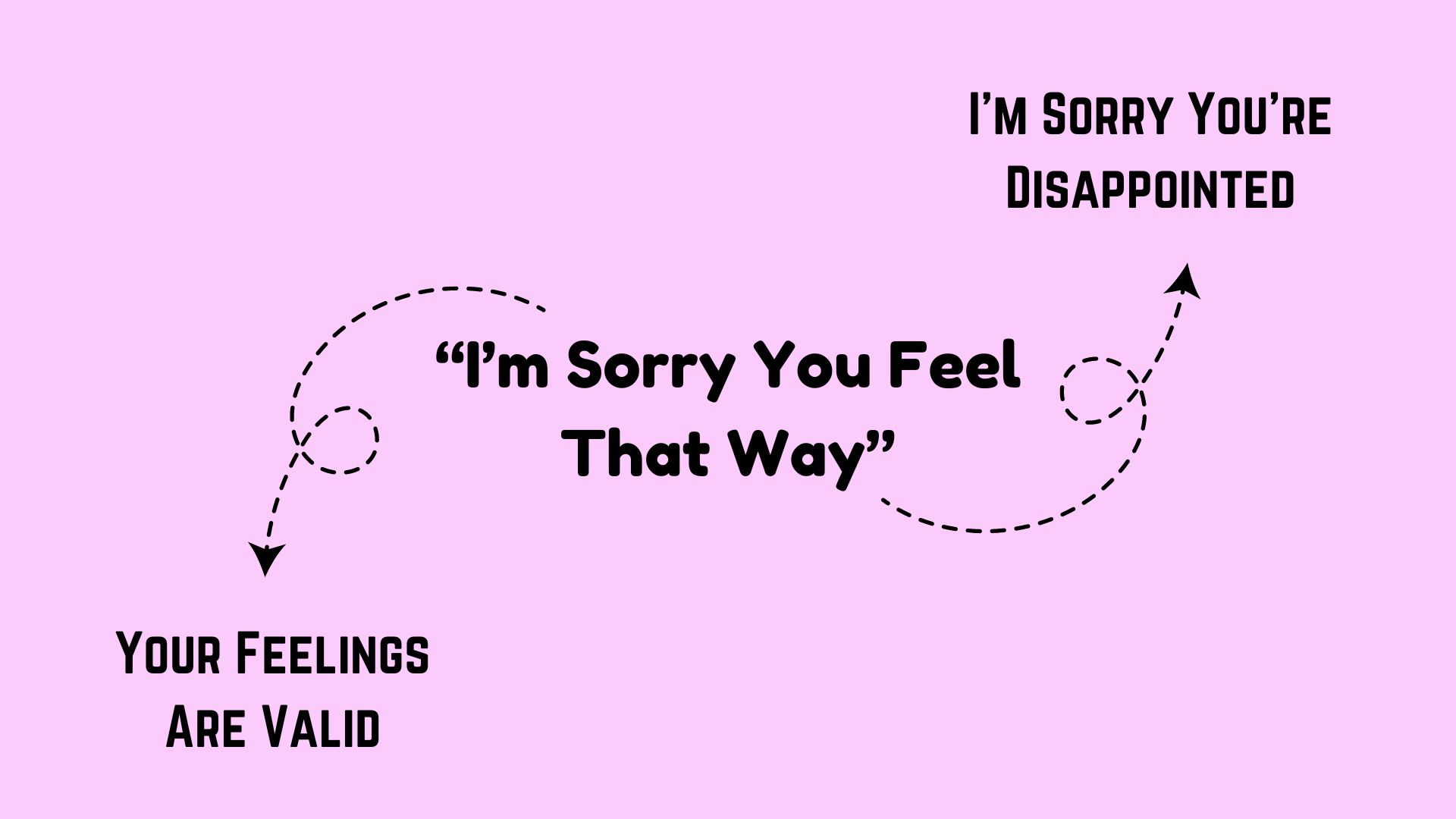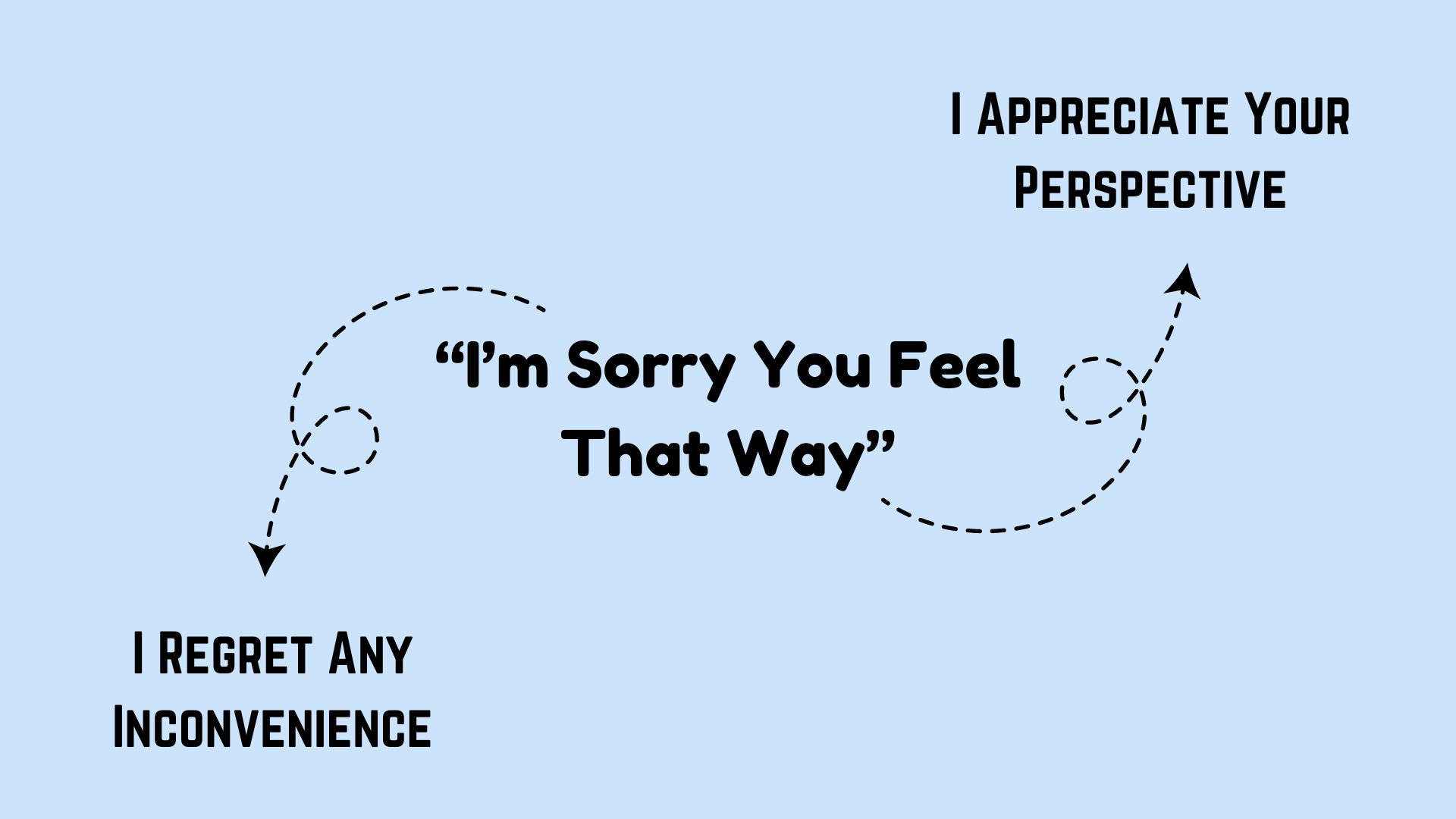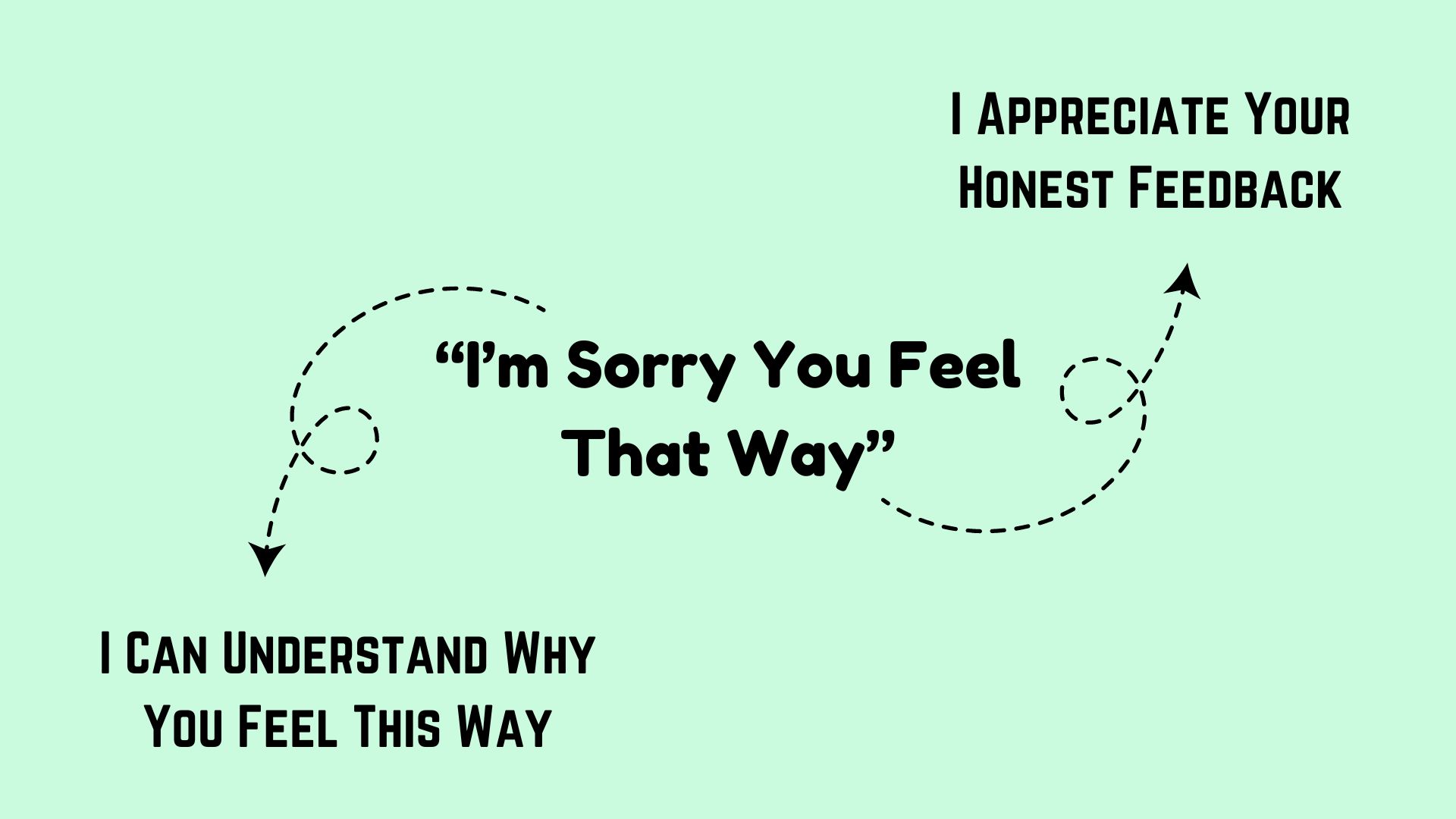When someone expresses dissatisfaction or discomfort, it’s important to acknowledge their feelings without being dismissive. Here are 23 ways to say “I’m sorry you feel that way” in a professional and empathetic manner, each with an example and a specific use case to help you maintain a respectful tone.
1. I Understand Your Concerns
Example: “I understand your concerns about the changes, and I’ll address them.”
Use Case: When acknowledging someone’s worries while offering a solution.
2. I Appreciate Your Feedback
Example: “I appreciate your feedback on this matter, and we’ll work on improving it.”
Use Case: When responding to constructive criticism in a positive and proactive way.
3. I’m Sorry You’re Disappointed
Example: “I’m sorry you’re disappointed with the outcome, and I’ll see what we can do to resolve it.”
Use Case: When addressing someone’s dissatisfaction with a service or result.
4. I Understand How That Could Be Frustrating
Example: “I understand how that could be frustrating; let’s find a way to make this better.”
Use Case: When someone expresses frustration and you want to show empathy.
5. Your Feelings Are Valid
Example: “Your feelings are valid, and I’ll make sure your concerns are addressed.”
Use Case: When you want to acknowledge someone’s emotions while committing to action.

6. I’m Sorry You’ve Had That Experience
Example: “I’m sorry you’ve had that experience; let me look into it and get back to you.”
Use Case: When someone shares a negative experience, and you need to investigate further.
7. I Can See How This Is Upsetting
Example: “I can see how this is upsetting, and I’ll work with the team to prevent it from happening again.”
Use Case: When recognizing the emotional impact of an issue and offering to resolve it.
8. I Regret Any Inconvenience
Example: “I regret any inconvenience this has caused and will work to make it right.”
Use Case: When apologizing for any discomfort or disruption caused by an error or miscommunication.
9. I Appreciate Your Perspective
Example: “I appreciate your perspective on this, and I’ll make sure we consider it moving forward.”
Use Case: When responding to differing opinions in a respectful manner.
10. I’m Sorry for Any Miscommunication
Example: “I’m sorry for any miscommunication, and I’ll clarify the details right away.”
Use Case: When a misunderstanding has occurred, and you need to set things straight.

11. I Understand This Has Been Challenging
Example: “I understand this has been challenging, and I’m here to help find a solution.”
Use Case: When someone is struggling and you want to offer assistance.
12. I Hear Your Concerns
Example: “I hear your concerns, and I’ll make sure they’re taken into consideration.”
Use Case: When you want to ensure the other person feels heard and acknowledged.
13. I’m Sorry This Didn’t Meet Your Expectations
Example: “I’m sorry this didn’t meet your expectations; let’s discuss how we can improve.”
Use Case: When someone is dissatisfied with a product or service and you’re looking to improve.
14. I Appreciate Your Honest Feedback
Example: “I appreciate your honest feedback and will use it to improve our process.”
Use Case: When someone provides critical feedback, and you want to respond positively.
15. I Can Understand Why You Feel This Way
Example: “I can understand why you feel this way, and I’ll do my best to address your concerns.”
Use Case: When empathizing with someone’s feelings and taking responsibility for addressing them.

16. I Regret That This Has Been Your Experience
Example: “I regret that this has been your experience, and I’ll look into it right away.”
Use Case: When someone’s experience with your service or product hasn’t been positive, and you’re taking action to investigate.
17. I’m Sorry If This Has Been Frustrating
Example: “I’m sorry if this has been frustrating for you; I’ll work to resolve it quickly.”
Use Case: When someone expresses frustration over a situation, and you want to resolve it promptly.
18. I See How This Could Be Difficult
Example: “I see how this could be difficult for you, and I’m committed to finding a solution.”
Use Case: When acknowledging the difficulty someone is facing and offering support.
19. I’m Here to Help Resolve This
Example: “I’m here to help resolve this issue and make sure it doesn’t happen again.”
Use Case: When offering your assistance in fixing a problem that’s been raised.
20. I Understand Your Frustration
Example: “I understand your frustration, and I’m working on a way to improve the situation.”
Use Case: When someone is upset and you want to show that you’re actively seeking a solution.

21. I Apologize for the Trouble This Has Caused
Example: “I apologize for the trouble this has caused, and I’ll do everything I can to fix it.”
Use Case: When an issue has caused problems, and you want to take responsibility for resolving it.
22. I Recognize This Isn’t Ideal
Example: “I recognize this isn’t ideal, and I’ll make sure we address the situation properly.”
Use Case: When someone points out a less-than-perfect situation, and you want to assure them it will be improved.
23. I’m Sorry for Any Confusion
Example: “I’m sorry for any confusion caused, and I’ll ensure the correct information is shared.”
Use Case: When a mix-up has occurred, and you’re taking steps to clarify the correct details.
Each of these phrases allows you to express understanding and empathy professionally while keeping the conversation constructive and solution-focused.

